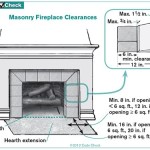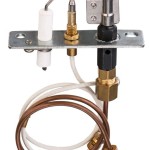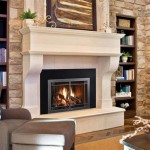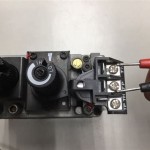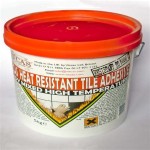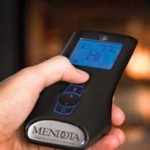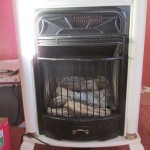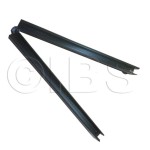Exploring the Capabilities and Benefits of a 10,000 BTU Electric Fireplace
Electric fireplaces have become increasingly popular as an efficient, aesthetically pleasing, and convenient alternative to traditional wood-burning or gas fireplaces. Among the various models available, the 10,000 BTU electric fireplace stands out for its heating capacity and ability to warm larger spaces. This article delves into the specifications, advantages, limitations, and key considerations surrounding the use of a 10,000 BTU electric fireplace.
The British Thermal Unit (BTU) is a unit of measurement used to quantify the amount of energy required to raise the temperature of one pound of water by one degree Fahrenheit. In the context of fireplaces, BTU rating indicates the heating power or output of the unit. A 10,000 BTU electric fireplace is designed to generate a substantial amount of heat, making it suitable for heating larger rooms or open-concept living areas.
Electric fireplaces operate by converting electrical energy into heat through a heating element. This element typically uses a resistance coil or an infrared quartz system. The generated heat is then circulated into the room using a fan or convection system. Unlike traditional fireplaces, electric fireplaces do not require venting, eliminating the need for chimneys or gas lines. This simplifies installation and makes them a versatile heating solution for various living spaces.
The core functionality of a 10,000 BTU electric fireplace lies in its heating element. Resistance coil heating elements work by passing electricity through a coil of wire, which heats up due to the electrical resistance. This heat is then blown into the room by a fan. Infrared quartz heating systems use infrared lamps to generate radiant heat, which directly warms objects and people in the room. The choice of heating element can influence the efficiency, heating characteristics, and longevity of the fireplace.
Beyond the heating element, the fan system plays a crucial role in distributing the generated heat effectively. A well-designed fan system ensures that the heat is evenly distributed throughout the room, preventing hot spots and creating a more comfortable environment. The fan's noise level is also an important consideration, as a noisy fan can be disruptive, especially in quiet settings.
Many electric fireplaces, including those with a 10,000 BTU rating, incorporate features such as adjustable thermostat controls, timers, and remote controls. These features enhance user convenience and allow for precise temperature management. Adjustable thermostats enable users to set the desired room temperature, while timers allow for automatic operation, reducing energy consumption and ensuring that the fireplace is only running when needed. Remote controls provide added convenience, allowing users to adjust settings from a distance.
The aesthetic appeal of electric fireplaces is another significant factor contributing to their popularity. Modern electric fireplaces are designed to mimic the look and feel of traditional fireplaces, incorporating realistic flame effects that create a warm and inviting ambiance. These flame effects are often achieved using LED lights and reflective surfaces, simulating the flickering flames of a real fire. The brightness and intensity of the flame effects can typically be adjusted to suit individual preferences.
Installation of a 10,000 BTU electric fireplace is generally straightforward, requiring only a standard electrical outlet. However, it is essential to ensure that the electrical circuit is capable of handling the fireplace's power consumption. Overloading a circuit can lead to overheating and potentially cause a fire hazard. It is always advisable to consult with a qualified electrician to ensure that the electrical system is adequate for the fireplace's power requirements.
While electric fireplaces offer numerous advantages, their limitations should also be considered. Electric fireplaces are primarily intended for supplemental heating and are not designed to heat an entire house in extremely cold weather. Their heating capacity is limited by the available electrical power, and relying solely on electric fireplaces for primary heating can be costly and inefficient.
The ongoing cost of operating a 10,000 BTU electric fireplace depends on several factors, including the local electricity rates, the frequency of use, and the thermostat settings. Monitoring energy consumption and adjusting usage patterns can help minimize operating costs. Turning down the thermostat or using the timer function can significantly reduce energy consumption without sacrificing comfort.
Maintenance requirements for electric fireplaces are minimal compared to traditional fireplaces. Regular cleaning is typically limited to dusting the unit and occasionally cleaning the glass screen to maintain a clear view of the flame effects. It is important to follow the manufacturer's instructions for cleaning and maintenance to ensure the longevity and proper functioning of the fireplace.
The lifespan of an electric fireplace can vary depending on the quality of the components and the frequency of use. High-quality electric fireplaces with durable heating elements and reliable fan systems can last for many years with proper care. Replacing the heating element or fan may be necessary over time, but these repairs are generally less expensive than maintaining a traditional fireplace.
Heating Capacity and Room Size
Determining the appropriate BTU rating for an electric fireplace is crucial for ensuring effective heating. A 10,000 BTU electric fireplace is generally suitable for heating rooms ranging from 400 to 1,000 square feet, depending on factors such as insulation, ceiling height, and the climate in which the home is located. Poorly insulated rooms or homes in colder climates may require a higher BTU rating to achieve the desired level of warmth.
Calculating the required BTU rating involves considering the room's dimensions and insulation levels. A general rule of thumb is to use 20 BTU per square foot for well-insulated rooms and 30 BTU per square foot for poorly insulated rooms. However, this is just a guideline, and it is always advisable to err on the side of caution and choose a slightly higher BTU rating than initially calculated.
The effectiveness of a 10,000 BTU electric fireplace can be enhanced by optimizing the room's insulation and sealing any drafts. Proper insulation helps to retain heat within the room, reducing the amount of energy required to maintain a comfortable temperature. Sealing drafts around windows and doors prevents heat loss and further improves the efficiency of the fireplace.
The placement of the electric fireplace within the room can also affect its heating performance. Positioning the fireplace in a central location allows for better heat distribution, while placing it near an outside wall can result in heat loss. Experimenting with different placements can help to identify the optimal location for maximizing heating efficiency.
Supplementing a 10,000 BTU electric fireplace with other heating sources can provide added warmth in extremely cold weather. Using a central heating system or portable heaters in conjunction with the electric fireplace can ensure that the entire space is adequately heated. This approach allows for more efficient and cost-effective heating, as the electric fireplace can be used to supplement the primary heating source.
The thermostat settings play a significant role in determining the heating performance and energy consumption of the electric fireplace. Setting the thermostat to a comfortable but not excessively high temperature can help to conserve energy without sacrificing comfort. Using the timer function to automatically turn off the fireplace when the room is unoccupied can further reduce energy consumption.
Regularly checking and cleaning the fireplace can also help to maintain its heating efficiency. Dust and debris can accumulate on the heating element and fan, reducing their performance. Cleaning these components regularly ensures that the fireplace is operating at its optimal efficiency, maximizing heat output and minimizing energy consumption.
Safety Considerations and Precautions
Safety is paramount when using any electrical appliance, including a 10,000 BTU electric fireplace. Following safety guidelines and precautions can help prevent accidents and ensure the safe operation of the fireplace. It is essential to read and understand the manufacturer's instructions before using the fireplace and to adhere to all safety warnings and guidelines.
Ensuring proper ventilation around the electric fireplace is crucial for preventing overheating. The fireplace should be placed in a location where there is adequate airflow, and it should not be covered or obstructed in any way. Overheating can damage the fireplace and potentially create a fire hazard.
Avoiding the use of extension cords with the electric fireplace is highly recommended. Extension cords can be a fire hazard, especially when used with high-power appliances. If an extension cord is absolutely necessary, it should be a heavy-duty cord that is rated for the fireplace's power consumption.
Keeping flammable materials away from the electric fireplace is essential for preventing fires. Curtains, furniture, and other flammable materials should be kept at least three feet away from the fireplace. This precaution will help prevent accidental fires and ensure the safety of the home.
Regularly inspecting the power cord and plug for damage is important for identifying potential hazards. A damaged power cord or plug can be a fire hazard and should be replaced immediately. Do not use the fireplace if the power cord or plug is damaged in any way.
Unplugging the electric fireplace when it is not in use can help to conserve energy and prevent accidents. Unplugging the fireplace also protects it from power surges, which can damage the internal components. It is a good practice to unplug the fireplace whenever it is not being used for an extended period of time.
Supervising children and pets around the electric fireplace is crucial for preventing accidents. The fireplace can get hot to the touch, and children and pets may not understand the potential hazards. It is important to keep children and pets away from the fireplace and to educate them about the importance of staying safe.
Installing smoke detectors and carbon monoxide detectors in the home is essential for detecting fires and carbon monoxide leaks. Smoke detectors can provide early warning of a fire, while carbon monoxide detectors can detect dangerous levels of carbon monoxide. These detectors can help to protect the occupants of the home from potential hazards.
Having a fire extinguisher readily available in the home is a good safety measure. A fire extinguisher can be used to put out small fires before they spread. It is important to know how to use a fire extinguisher and to keep it in a location where it is easily accessible.
Cost-Effectiveness and Energy Efficiency
Evaluating the cost-effectiveness of a 10,000 BTU electric fireplace involves considering both the initial purchase price and the ongoing operating costs. While the initial purchase price may be higher than that of some other heating options, electric fireplaces offer several advantages in terms of energy efficiency and long-term cost savings.
Comparing the energy efficiency of electric fireplaces to other heating methods is crucial for understanding their cost-effectiveness. Electric fireplaces are generally more energy-efficient than traditional wood-burning or gas fireplaces, as they do not lose heat through a chimney or flue. They also offer zone heating capabilities, allowing users to heat only the rooms they are using, rather than heating the entire house.
Calculating the operating costs of a 10,000 BTU electric fireplace requires considering the local electricity rates and the frequency of use. The wattage of the fireplace is a key factor in determining its energy consumption. A 10,000 BTU electric fireplace typically consumes around 1,500 watts of electricity. Multiplying the wattage by the number of hours used and the electricity rate provides an estimate of the operating costs.
Implementing energy-saving strategies can help to minimize the operating costs of the electric fireplace. Adjusting the thermostat settings to a comfortable but not excessively high temperature can reduce energy consumption. Using the timer function to automatically turn off the fireplace when the room is unoccupied can further reduce energy consumption.
Choosing an electric fireplace with energy-efficient features can also contribute to cost savings. Look for models with LED flame effects, which consume less energy than traditional incandescent bulbs. Some models also feature adjustable heat settings, allowing users to tailor the heat output to their specific needs.
Maintaining the electric fireplace properly can help to ensure its energy efficiency. Regularly cleaning the heating element and fan can prevent dust and debris from accumulating, which can reduce their performance. Following the manufacturer's instructions for maintenance can also help to prolong the lifespan of the fireplace.
Comparing the cost-effectiveness of an electric fireplace to other heating options requires considering the long-term costs. While the initial purchase price of an electric fireplace may be higher than that of some other options, the lower operating costs and minimal maintenance requirements can result in significant savings over time. Electric fireplaces also offer the added benefit of aesthetic appeal, which can enhance the value of the home.
The use of smart thermostats can further enhance the energy efficiency and cost-effectiveness of an electric fireplace. Smart thermostats allow users to control the fireplace remotely and to schedule heating cycles based on their occupancy patterns. These thermostats can learn the user's preferences and automatically adjust the temperature to optimize energy consumption.
Investing in energy-efficient windows and insulation can complement the use of an electric fireplace and further reduce heating costs. Energy-efficient windows help to prevent heat loss, while proper insulation helps to retain heat within the home. These improvements can significantly reduce the amount of energy required to heat the home and can result in substantial savings over time.

Modernflames Landscape Pro Multi Sided Built In Electric Fireplace 4 Fireplaces Usa

Modernflames Landscape Pro Multi Sided Built In Electric Fireplace 4 Fireplaces Usa

Modernflames Landscape Pro Multi Sided Built In Electric Fireplace 4 Fireplaces Usa

Modernflames Landscape Pro Multi Sided Built In Electric Fireplace 4 Fireplaces Usa

Modern Flames Redstone 30 Inch Built In Electric Fireplace Insert Firebox Heater Rs 3021 Fireplaces Depot

Napoleon Nefb42 Element 43 Wide 10000 Btu Vent Free Electric Built In Fireplace Black Com

Modern Flames Landscape Pro Multi Hearthmart Com Hearth Mart

Modernflames Landscape Pro Multi Sided Built In Electric Fireplace 4 Fireplaces Usa

Napoleon Nefb42h Bs Element Built In Electric Fireplace 42 Inch

10000 Btu Intelligent Design Wall Electric Stove Fireplace Room Heater China Made In Com

